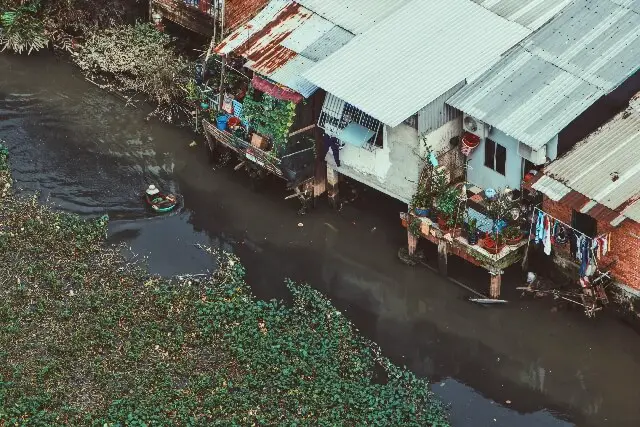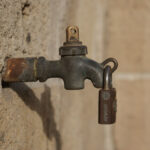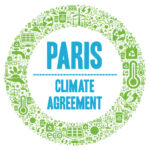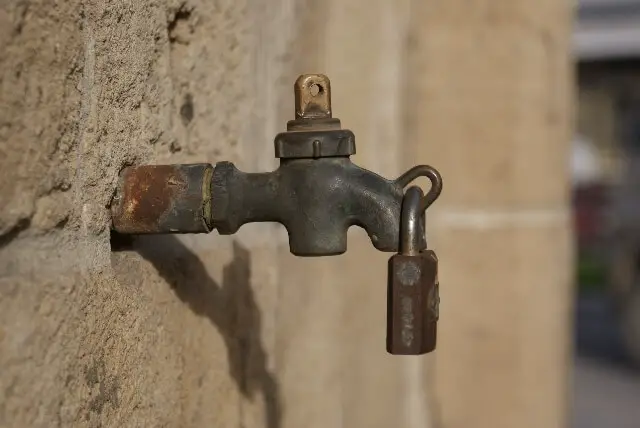There’s lots of talk about “climate change” these days and it brings up several concerns in regards to environmental impacts.
Water scarcity is one of these and many people wonder, “How does water scarcity affect the environment?
When water is scarce, it can affect the environment in a host of troublesome ways.
Because trees and plant life aren’t receiving the necessary moisture, nutrients and minerals can’t get into their roots to make them lush and green.
Animals and people suffer because they also need water for their survival and it lowers air quality because there isn’t enough fresh oxygen.
What’s more, if water isn’t part of the environment for too long, then the ground becomes clay-like and dry.
When it does eventually rain, the ground won’t absorb the moisture and the runoff can cause flooding. Such an event can destroy homes, farmlands and animal habitats.
How Does Water Become Scarce?
Water becomes scarce by two causes: nature and human meddling. In regards to nature, two components can influence how much water is available.
The first is the region in question and the kind of regular precipitation the area gets each year. The second cause is beavers.
Some areas of the world are naturally high in drought, such as is the case with Atacama Desert straddling Peru and Chile.
This is one of the driest places in the world and therefore, water is very scarce. Few people or animals live in the area because of it.
How Do Beavers Create Water Scarcity?
Then, of course, beavers can be a problem and sometimes create certain issues of water scarcity in one area while diverting water to others and flooding out farmlands.
This tends to be a common issue in places like Wisconsin, Michigan and Canada, among many others.
Beavers, unlike any other animal, have the capacity to change the environment. They can do this in such a physical way that it can alter the landscape. This not only has an effect on human habitats but also for other animals.
How Does Human Meddling Create Water Scarcity?
Water scarcity occurs most often as a result of human meddling. There are many things’ people are doing with water that don’t seem to make sense.
For instance, California, an area known for experiencing drought, has released waters from their reservoirs for a long time now.
This is nonsensical since it’s not going to farmers, ranchers, growers or even toward urban use. California’s environmental policy, in the name of “climate change,” flows precious water from reservoirs to save Chinook Salmon and Delta Smelt, which are endangered species.
How Is Trying to Save Salmon and Smelt a Problem?
The problem with this is that it’s not saving the fish at all. In fact, they haven’t collected samples of either species to measure the progress. They’ve been doing this for nearly 30 years and both fish are closer to extinction than they were before.
Meanwhile, Californians are suffering without water and they incur fines for using water beyond their monthly allotment. So, the policy is pure failure yet they continue to do it.
In fact, 80 million Californians could live comfortably on what government policy releases from these reservoirs.
How Does “Climate Change” Affect Water Scarcity?
“Climate change” is a difficult event to quantify in regards to water scarcity or any of the other things “experts” claim is occurring. Given the example above with California, we have to question “climate change” and how much humans affect it.
This isn’t to say that humankind doesn’t have some sort of influence on it. Indeed, we do. But the amount of how much we affect deserves further study.
Part of the reason for this comes from original claims of human activity putting holes in the Ozone Layer. We now know the Ozone Layer heals itself and creates new holes all the time.
It’s crucial to note that the climate has always changed. In fact, many scientists are con
firming much of what many ancient cultures thought about the earth: that it’s a living, breathing and growing entity.
Therefore, climate change is a natural process, with evidence gained through ice cores taken at the north and south poles.
How Do Scientists Measure Historic Climate Change?
Scientists have demonstrated tumultuous climate change, huge volcanic eruptions and subsequent tsunamis through these ice samples. Heating, cooling and stabilization are part of the cyclical balance. It’s just that human life is short and no one ever witnesses a full cycle.
Ergo, when the earth changes, so does the water. These events create flooding, drought and ice along with forming new bodies of water and rerouting rivers. All you have to do is look at the case with ancient Egypt and their annual flooding of the Nile that no longer occurs.
You can also see similar evidence in the Euphrates River near Iraq and the Ganges River in India. When you study the history, there have been great fluctuations and changes. All of which is due to how the earth grows and expands.
Final Thoughts
Water scarcity can be and is a serious issue. It can affect the environment in negatively profound ways. However, we have to evaluate why it’s occurring and if it’s avoidable along with solutions.
In some instances, it’s just nature and the earth going through their normal processes, but in others it’s the result of human meddling.



